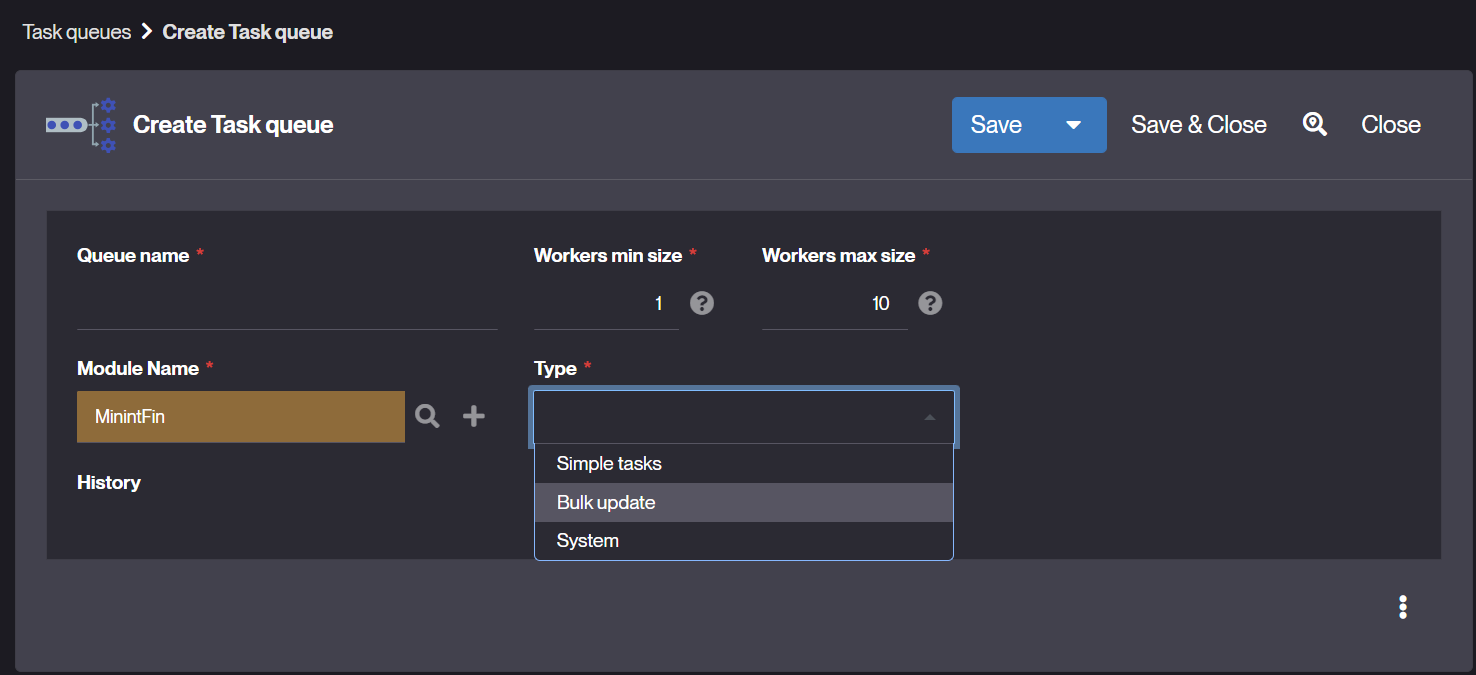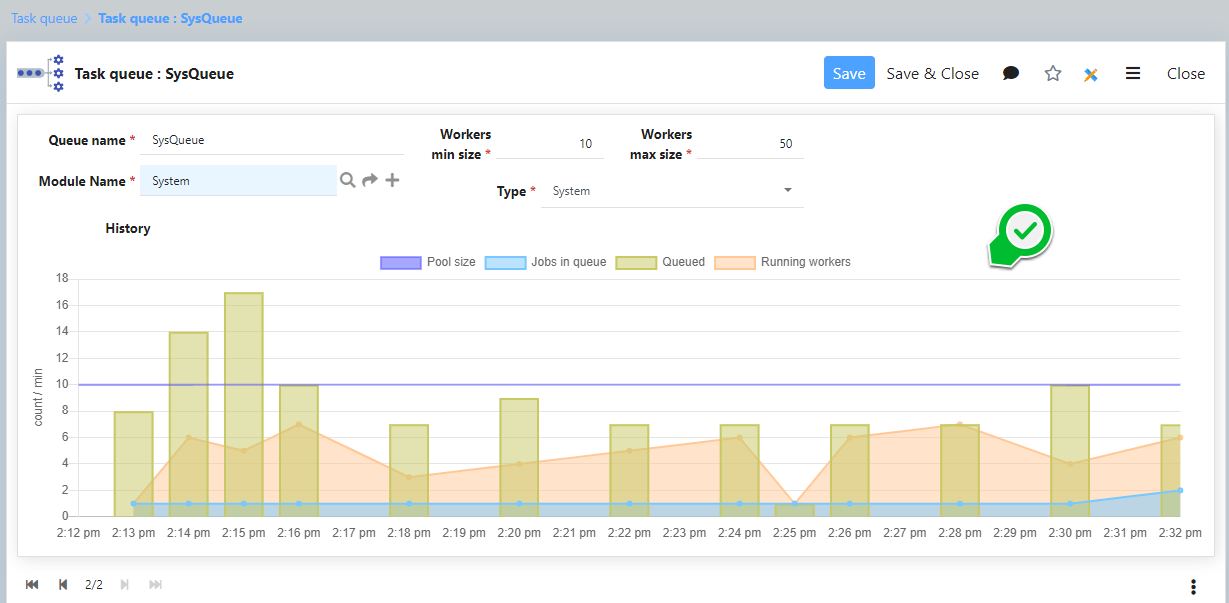Task Queues
Introduction
As of Simplicité® version 6.0, the asynchronous task execution model introduces a more flexible task queue system, replacing the single worker pool from earlier versions.
This system allows separation between application-level and system-level background jobs, with the ability to define custom queues tailored to specific workload types and resource usage requirements.
Two default queues are provided:
AppQueue: Handles user-defined asynchronous tasksSysQueue: Reserved for internal platform jobs
Custom queues can be created with configurable minimum and maximum worker thread pool sizes.
Configuration
You can create or configure task queues through the administration UI or via module definitions.
| Field | Description |
|---|---|
| Queue name | Unique identifier for the task queue |
| Module name | Functional module the queue belongs to |
| Workers min size | Minimum number of worker threads |
| Workers max size | Maximum number of worker threads |
| Type | Type of queue workload: Simple tasks, Bulk update, or System |
| History | Displays runtime metrics (queue size, active threads, etc.) over time |

Usage
You can assign a queue to any:
- Asynchronous Action
- Scheduled (Crontab) Job
To push a job programmatically into a specific queue, use:
JobQueue.push("queueName", "Job label", myRunnable, Thread.NORM_PRIORITY);
If no queue is specified, the job will be pushed to the default AppQueue.
Monitoring
A built-in history and monitoring dashboard tracks the evolution of each queue over time. The system stores the last 1,000 metrics per queue, including:
- Queue size
- Number of active workers
- Timestamped metrics
This information can help in diagnosing bottlenecks or adjusting thread pool configurations as needed.
Note Monitoring and queue management are accessible via the platform's administration UI.
Best Practices
- SysQueue is reserved to internal platform tasks.
- AppQueue is by default for your application jobs.
- For heavy or time-sensitive jobs, define custom queues with adjusted thread limits.
- Monitor queue metrics regularly to ensure proper job distribution and avoid worker starvation.
- Avoid assigning too many jobs to the default queue to prevent delays in application-level async actions.
